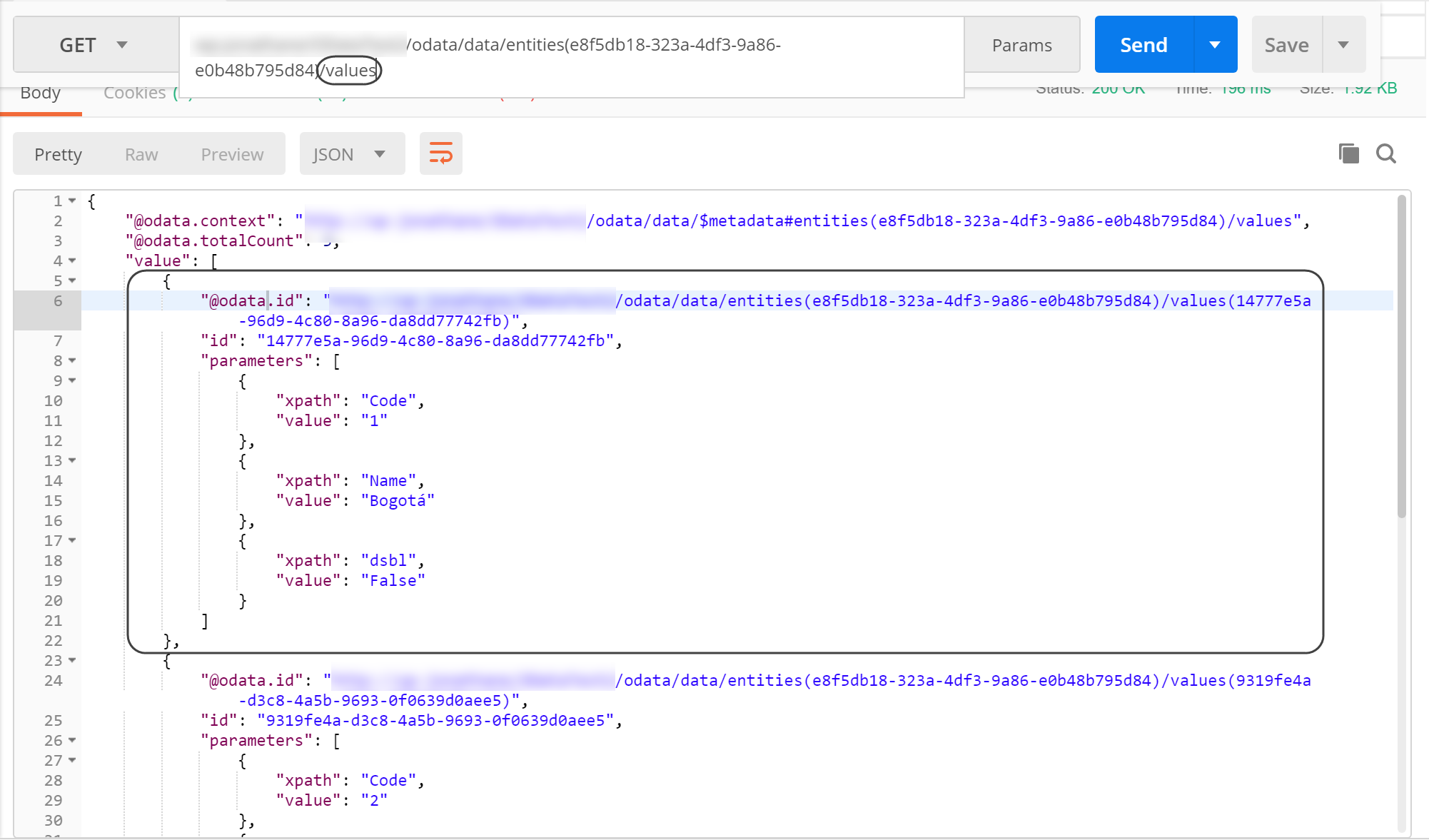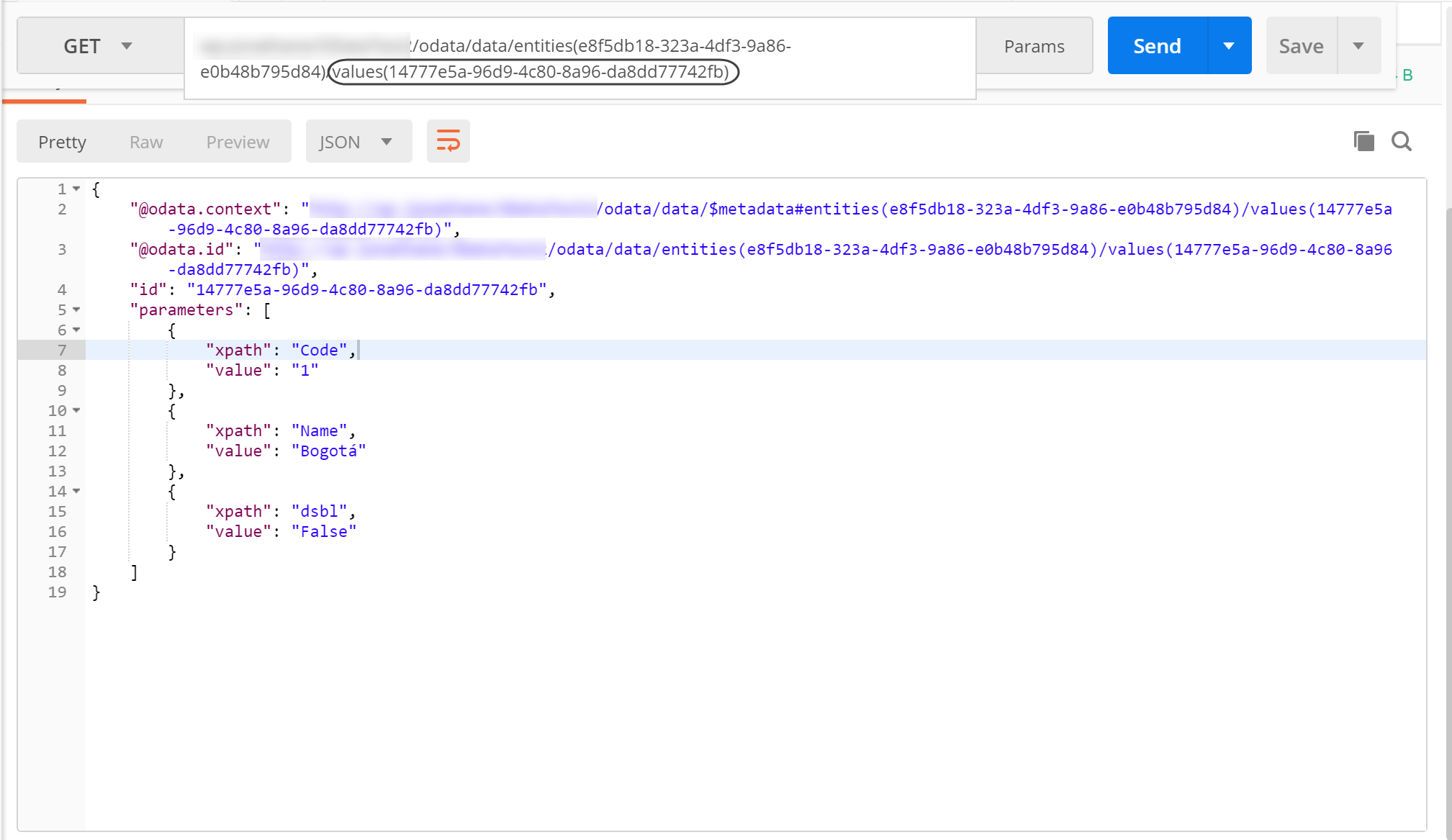Overview
Bizagi features an OData service which handles aspects of the Experience design, as described at Data services.
Through the Entities URI, you may handle data related to manageable Entities, which are Parameter entities and Personas.
Remember to make sure that you have set up manageable entities, such as parameter entities, on your project. Otherwise the services described across this article may result in errors or empty responses.
To check if you have set up such entities, you may navigate to Expert view, Entities option and expand the parameter node. When you click the values node of the parameter entity, on the main panel you will find a list of the values that have been set up, as shown below.

Resource URL
Start off from the following URL:
[your_bizagi_project_url]/odata/data/entities
Consider:
•[your_bizagi_project_url]: Corresponds to the URL where end users access the Bizagi Work portal.
While for Automation Service projects, such URL would be:
https://[project_environment]-[your_project]-[your_company].bizagi.com/odata/data/entities
Which entities are returned by the service
To invoke any OData service, you need to get an authorization token which is related to a user. Depending on the authorization configuration for each entity, this service returns entities for whom the user is authorized. If no authorization is set, this service returns all parameter and Persona entities.
Example
The following image illustrates how you can send an HTTP GET for this resource:
Notice how on the response of the service invocation the list of attributes resembles those of the entity in the previous image.

Returned results consider (inside of the value element):
•DisplayName: The default display name of the resource.
•@odata.id: The unique URL to access that specific resource.
•Id: A string-based GUID representing the URI of that specific resource.
•name: the name of the entity as stored in the Data Model.
•Type: type of entity.
•Template: object containing a list of the entity's attributes.
oName: name of the attribute.
oXpath: Xpath to access the specific attribute.
oType: data type of the attribute as set in the Data Model.
|
In addition to the above, for every set of results returned by the OData services, the successful response includes a set of standard properties which are preceded by the @ sign. Such properties are described at Properties and querying options. |
Notice how through the @odata.id property, you can obtain that specific record's detail only, instead of a full list.
For example using:
[your_bizagi_project_url]/odata/data/entities([ID_entity]):

Notice you may also obtain values set for an entity.
For example using:
[your_bizagi_project_url]/odata/data/entities([ID_entity])/values

And you may drill down into a given value.
For example using:
[your_bizagi_project_url]/odata/data/entities([ID_entity])/values([ID_value])
Which will bring additional information of that specific value of the given entity.

|
When the values of Image or Upload type attributes are obtained, they must be consulted as specified in the article URLs for Images and Uploads |
Customizing the returned attributes
In case you want to filter or completely change the set of information returned for this services invocations, refer to Setting which business information is returned.
Authorization
To restrict the access to the Entities data service, you must go to Bizagi Studio's Expert view. Once there, select the Security option and expand the following nodes: Authorization > Pages > Administration. After expanding the latter, look for the Entities option and click it.

In the window that appears, add and select the User Groups, User Roles or Personas for whom you want to configure access permissions to the service in the User Groups And Roles panel. Then, restrict the access to service by clicking the Deny radio button in the Access option of the Permissions panel. Finally, click the OK button to keep your changes.
|
Bear in mind that the service can be accessed without restriction by default. |

Last Updated 1/30/2023 4:46:33 PM